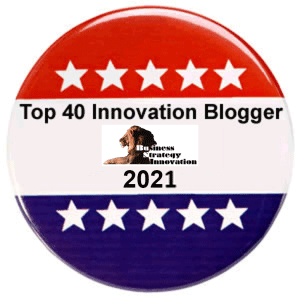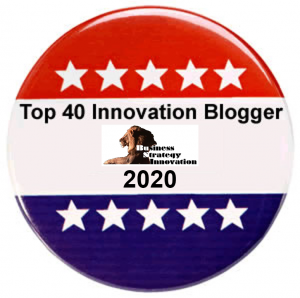Taking personal responsibility is an especially crucial capability, for entrepreneurs and innovators to develop in the decade of both disruption and transformation. It involves developing a set of powerful self-awareness and self-regulation skills and is further enabled by being able to see ourselves as the “cause” or source of what happens to us, and to others affected by the outcome. When we step up and out of blaming ourselves or others, out of justifying our position or denying what is really going on, people can learn to sense, recognise and understand the structures and patterns at play in their lives. They can then step up and above the line of choice, take a sacred pause, and make a fundamental choice to shift or change the pattern or structure, by seeing themselves as the cause of what happens to them, to create what they really want to create in their lives, teams or organisations.
Doing this requires hitting your “pause button’ to stop a continuous cycle of doing stuff, focus our attention on breaking the limiting or unresourceful patterns or structures, and create a place, as recently described by Otto Scharmer, from the Presencing Institute as “Between action and non-action there is a place. A portal into the unknown. But what are we each called to contribute to the vision of the emerging future? Perhaps these times are simply doorways into the heart of the storm, a necessary journey through the cycles of time required to create change”.
Creating the place – the sacred pause
Happily completing my thirty-fifth year in corporate consulting, learning and coaching, and reviewing some of my most impactful successes, mistakes, failures, and learning experiences, I have learned to appreciate the value of the sacred pause.
Rather than acting out the harmful process of “self-blame” I have learned to rationally assess the impact of my small imperfections, mistakes, and failures, by intentionally applying the sacred pause by:
- Stopping doing stuff and retreating from activity, and hitting my pause button,
- Getting present to my heartfelt and emotional state,
- Accepting my heartfelt and emotional state, acknowledging how I was truly feeling about what happened,
- Connecting cognitively with what had really happened to unpack the reality of the situation,
- Acknowledging and eliminating any distortions, or limiting beliefs around it,
- Acknowledging some of the many things that I had actually done really well,
- Asking myself what is the outcome/result I wanted next time?
- Asking myself, what can I really learn from this situation?
- Consciously choosing what to do differently next time I am faced with a similar challenging situation?
I still often find myself struggling with creating the Sacred Space between Stimulus and Response and have noticed, in my global coaching practice, that many of my well-intentioned clients also struggle with appreciating the value of the sacred pause. The impact of the last two and a half years of working at home, alone, online, with minimal social interactions and contact, has caused many of them to languish in their reactivity, and for some of them, into drowning in a very full emotional boat, rather than effectively riding the wave of disruptive change.
Being the creative cause
In our work at ImagineNation, whether we help people, leaders and teams adapt, innovate and grow through disruption, their ability to develop true self-awareness and be above the line is often the most valuable and fundamental leadership, entrepreneurial, or innovation skill set they develop.
It then enables people to make the distinction that creating is completely different from reacting or responding to the circumstances people find themselves in by applying the sacred pause.
When entrepreneurs and innovators make the shift towards seeing self as the cause they are able to create and co-create what they want in their lives, business endeavours, teams, or organisation.
By learning to create by starting with asking the two questions to create a state of creative tension, and it is this creative tension that then seeks resolution:
- What result do you/I want to create in your/my life?
- What is the reality of your/my current situation?
In his ground-breaking book “The Path of The Least Resistance” Robert Fritz, goes on to describe and rank these desired results as “Fundamental Choices, Primary Choices, and Secondary Choices”.
Because there is one thing that we can all do right and is totally in our control – is to shift towards seeing self as the cause and make a set of conscious choices, with open hearts, minds, and wills, as to how we think, feel and choose to act.
“We are the creative force of our life, and through our own decisions rather than our conditions, if we carefully learn to do certain things, we can accomplish those goals.”
We all have the options and choices in taking responsibility, empower ourselves and others to be imaginative and creative, and use the range of rapid changes, ongoing disruption, uncertainty, and adverse pandemic consequences, as levers for shifting and controlling, the way we think, feel.
Benefits of seeing self as the cause and being above the line
Applying the sacred pause to make change choices in how we act – and being brave and bold in shifting across the maturity continuum, will help us to cultivate the creativity, interdependence, and systemic thinking that is needed right to help people:
- Attend to, and take personal responsibility to self-regulate their reactive emotional responses, be more open-hearted and emotionally agile when experiencing the change or innovation roller coaster ride,
- Develop psychologically safe and trusted work environments where expectations, roles, and goals are clear, and people are able to collaborate and experiment, and learn by failing without the fear of retribution or punishment.
- Be more open-minded, imaginative, and curious to create a safe space for continuous learning, maximising differences, diversity and inclusion, and proactive intentional change and transformation through innovation.
- Take ownership of problems and challenging situations and help develop constructive and creative responses to problems and harness collective intelligence to take intelligent actions.
- Impact positively on others and build empowered, trusted, and collaborative relationships which are foundational to the success of innovation and digital transformation initiatives.
- Invent creative solutions and drive successful innovative outcomes through aligned execution initiatives.
- Build the foundations for accountability, where people take smart risks on negotiating outcomes that they can be counted on for delivering.
Tips for seeing self as the cause and operating above the line
Taking personal responsibility and seeing self as the cause involves taking the sacred pause to consider:
- Acknowledging that “I/we had a role or contributed in some way, to the fact that this has not worked out the way “I/we wanted.”
- Clarifying the desired outcome or result you want from a specific situation or a problem.
- Seeking alternatives and options for making intelligent choices and actions, and using the language of “I/we can” and “I/we will” to achieve the outcome.
- Replacing avoiding, being cynical and argumentative, blaming, shaming, controlling, and complaining with courageous, compassionate, and creative language and acts of intention.
- People become victors who operate from “self as cause” where they are empowered to be the creative forces in their own lives by making fundamental, primary, and secondary change choices.
- Trusting your inner knowing and deep wisdom that everything has a specific and definable cause and that each one of us has the freedom to choose how to respond to it.
Back to leadership basics
As Stephen Covey says, people need to deeply and honestly say “I am what I am today because of the choices I made yesterday”.
Because, as the past two and half years have taught us, it’s not what happens to us, it’s our reactive response to what happens that hurts us.
Being willing to step back, take the sacred pause, by retreating and reflecting on the gap between the results you want, and the results you are getting all starts with asking yourself, or your client:
– What happened? What were the key driving forces behind it?
– How am I/we truly feeling about it?
– What was my/our role in causing this situation, or this result?
– What can I/we learn from it?
– What is the result/outcome I/we want to create in the future?
– What can I/we then do to create it?
The ultimate personal power of seeing self as the cause
As my thirty-five years have demonstrated, as a corporate trainer, consultant, and coach, I have found out the hard way, through experience, that taking personal responsibility and seeing self as the cause is the basis of real personal power and total freedom. This is so important to me, and almost everyone else I am currently interacting with, in times of uncertainty and instability, whether they are entrepreneurs and innovators, or not!
It’s the foundation for transcending paralysis, overwhelm, and stuck-ness and activating our sense of agency, and be emotionally agile, and developing the GRIT to create, invent and innovate in ways that can start to transform cultures, societies and ourselves.
Find out more about our work at ImagineNation™
Find out about our learning products and tools, including The Coach for Innovators, Leaders, and Teams Certified Program, a collaborative, intimate, and deeply personalized innovation coaching and learning program, supported by a global group of peers over 9-weeks, starting Tuesday, October 18, 2022. It is a blended and transformational change and learning program that will give you a deep understanding of the language, principles, and applications of an ecosystem focus, human-centric approach, and emergent structure (Theory U) to innovation, and upskill people and teams and develop their future fitness, within your unique context. Find out more about our products and tools.
This is the final in a series of three blogs on the theme of taking responsibility – going back to leadership basics.











